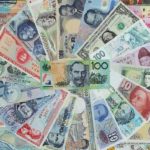Yesterday’s trade saw USD/CAD within the range of 1.3649-1.3754. The pair closed at 1.3739, rising 0.51% on a daily basis. It has been the 19th gain in the past 33 trading days and also the steepest one since February 5th, when the pair appreciated 1.18%. In addition, the daily low has been the lowest level since December 11th, when a low of 1.3619 was registered.
At 7:47 GMT today USD/CAD was edging up 0.17% for the day to trade at 1.3764. The pair touched a daily high at 1.3782 during the early phase of the Asian trading session, undershooting the upper range breakout level (R4), and a daily low at 1.3717 during Asian trade as well.
Canada’s dollar distanced from recent highs against its US counterpart, as crude oil futures recorded an 0.49% drop on Thursday. February 18th marked the 25th drop in oil prices out of the past 45 trading days. Oil futures for April delivery went down as low as $30.27 per barrel on February 18th and closed at a level of $30.51. As of 7:59 GMT today the commodity was gaining 7.08% on a daily basis to trade at $32.67 per barrel, after going up as high as $32.84 earlier. Oil has trimmed its slump to 2.74% so far during the current month.
On Friday USD/CAD trading may be influenced by the following macroeconomic reports as listed below.
Fundamentals
United States
Consumer Price Inflation
The annualized consumer inflation in the United States probably accelerated to 1.3% in January, according to market expectations, from 0.7% in December. If so, it would be the highest rate of inflation since November 2014, when the annual CPI rose 1.3%. In monthly terms, the Consumer Price Index (CPI) probably fell 0.1% in January, following another 0.1% dip in the preceding month.
In December upward pressure came from cost of services less energy (up 2.9% year-on-year and matching the gain rate in November). Within the category, cost of shelter went up 3.2% year-on-year, cost of medical care rose 2.9% and cost of transportation services increased 2.6%. Additionally, consumers paid more for food in December (up at an annualized rate of 0.8%, but slowing down from a 1.3% increase in November), according to the report by the Bureau of Labor Statistics. The largest downward pressure on the annual CPI came from prices of energy (down 12.6% in December from a year ago, or a lesser decline compared to November).
The annualized core consumer inflation, which is stripped of prices of food and energy, probably remained at 2.1% for a second consecutive month in January, according to expectations. This has been the highest core inflation since July 2012. It is usually reported as a seasonally adjusted figure, because consumer patterns are widely fluctuating in dependence on the time of the year. The Core CPI is the gauge, which the Federal Reserve Bank takes into account in order to adjust its monetary policy stance. The Fed uses the core CPI, because prices of food, oil and gas are highly volatile, while the central bank’s tools are slow-acting. In case, for example, prices of oil plunge considerably (as is the present situation), this could result in a low rate of inflation, but the central bank will not take action until this decrease affects prices of other goods and services.
If the general CPI tends to approach the inflation objective, set by the Federal Reserve and considered as providing price stability, or a level below but close to 2%, this will usually bolster the appeal of the US dollar, as it heightens the probability of monetary policy tightening.
The Bureau of Labor Statistics is to release the official CPI report at 13:30 GMT.
Canada
Retail Sales
Retail sales in Canada probably decreased 0.6% in December on a monthly basis, according to the median forecast by experts, following a 1.7% surge in the prior month. The latter has been the sharpest monthly gain since February 2015. Retail sales, excluding sales of automobiles, probably went down 0.5% in December from a month ago, following a 1.1% surge in November. Large-ticket purchases are excluded due to their high volatility, which could influence the general trend. In case general retail sales declined more than anticipated, this would have a moderate bearish effect on the Canadian dollar. Statistics Canada is to release the official report at 13:30 GMT.
Consumer Inflation
The annualized consumer inflation in Canada probably accelerated to 1.7% in January, according to market expectations. If so, it would be the highest annual inflation since November 2014. In December annual consumer prices were reported to have risen 1.6%.
In December prices of food rose 3.7% year-on-year, or matching the gain rate in the previous month. Consumers also paid more for clothing and footwear during the month (a 0.7% year-on-year increase, following a 2.1% rise in November). In addition, cost of transportation went up 0.6% in December, following 13 successive months of decrease, according to the report by the Statistics Canada.
Bank of Canadas (BoC) annualized Core CPI, which excludes prices of fruits, vegetables, gasoline, fuel oil, natural gas, mortgages, intercity transportation, and tobacco products, probably remained at 1.9% for a second straight month in January. In November the annual core CPI rose 2.0%. This is the key measure of inflation, on which the central bank bases its decisions regarding monetary policy. In case both the general CPI and the core CPI accelerated more than projected in January, this would have a strong bullish impact on the Canadian dollar. The official CPI report by the Statistics Canada is due out at 13:30 GMT.
Daily and Weekly Pivot Levels
By employing the Camarilla calculation method, the daily pivot levels for USD/CAD are presented as follows:
R1 – 1.3749
R2 – 1.3758
R3 (range resistance) – 1.3768
R4 (range breakout) – 1.3797
S1 – 1.3729
S2 – 1.3719
S3 (range support) – 1.3709
S4 (range breakout) – 1.3681
By using the traditional method of calculation, the weekly pivot levels for USD/CAD are presented as follows:
Central Pivot Point – 1.3882
R1 – 1.3982
R2 – 1.4116
R3 – 1.4216
S1 – 1.3748
S2 – 1.3648
S3 – 1.3514





